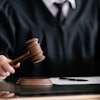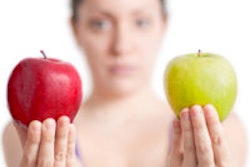
Is the noise in your office or laboratory affecting you? Researchers assessed noise levels in both environments and found that the presence of certain types of sound and the degree of exposure were linked to various short- and long-term mental and physical effects.
The investigators monitored practitioners' noise exposure in a pediatric dental clinic and a dental laboratory, and they conducted a health risk assessment of professionals exposed to the noise. They found that the noise level was louder in the lab than in the clinic, and the degree of exposure over time was linked to negative changes in hearing, work performance and satisfaction, and other physical and emotional measures.
"The short-term physiological symptoms of headache, nausea, fatigue, hypertension, irritation, and tinnitus were found to be associated with the sharpness of the occupational noise experienced by the dental professionals," the authors wrote (International Journal of Environmental Research and Public Health, September 19, 2017). "The effects from those symptoms would eventually show in the bad hearing and health states of the dental professionals."
The study was led by Kuen Wai Ma of the department of pediatric dentistry at the University of Hong Kong Faculty of Dentistry.
Can you hear me now?
The international standard for occupational exposure to noise during an eight-hour day over a five-day work week is no more than 85 A-weighted decibels (dBA), according to the authors. This level is about the sound of a food blender. However, previous research has found that noise even quieter than this can have negative effects on employees' work performance, physical and psychological conditions, and self-reported health levels.
“The short-term physiological symptoms of headache, nausea, fatigue, hypertension, irritation, and tinnitus were found to be associated with the sharpness of the occupational noise.”
Noise in the dental environment can come from building facilities, human activities, and dental equipment. This can include air-conditioning systems, broadcasting systems, computers, human voices in conversation, children crying, high- and low-speed handpieces, suction tubes, and ultrasonic scalers, the authors noted.
The use of noisy dental equipment increases the prevalence of hearing impairment in dental professionals, according to previous research, and the quality of dental noise has been associated with dental anxiety in patients and negative influences on practitioners.
In the current study, the researchers sought to conduct a noise-exposure assessment of dental professionals' daily working environment and assess the health risk from this exposure. They performed 60 noise-exposure assessments during normal working hours on a randomly chosen day, half at a pediatric dental clinic and half at a dental laboratory, both at Prince Philip Dental Hospital in Hong Kong. They took 10-minute-long measurements in different locations, since dental professionals move around throughout their day.
The study included 60 practitioners who worked in these locations (30 from each) and completed a 31-item questionnaire, with questions on demographic information, degree of dental noise influences, degree of negative impacts, overall health condition, and more.
| Noise levels in pediatric dental clinic vs. dental lab | ||
| Pediatric dental clinic | Dental lab | |
| Sound level, total loudness, & sharpness | 62.2 dBA | 66.2 dBA |
| Loudest 10-minute interval | 74.98 dBA | 91.59 dBA |
The dental lab was both louder and had a louder 10-minute interval than the pediatric dental clinic. The sound characteristics at the clinic and lab were similar, but the floor area of the lab was almost five times smaller, which might explain why the sound pressure level of the noise was generally higher there.
Noise sharpness was correlated with negative short-term impact, hearing, and health of the practitioners. The effects of noise from dental equipment were greater than for noise from other sources. The energy content of the high-frequency components of noise was linked to headache, nausea, fatigue, hypertension, irritation, and tinnitus.
In addition, those who had worked for more than 10 years at the clinic or lab and more than eight hours a day had a greater chance of having worse hearing, which was linked to having a worse health state.
Noise from all sources had a negative effect on the practitioners' work performance and led to a greater prevalence of having work interrupted, communication affected, and being sensitive to noise. Long-term exposure to dental equipment noise was linked to interest loss, concentration loss, memory loss, poor sleep quality, and nervousness, as well as dissatisfaction in the working environment.
Noises off
The authors made a number of recommendations for dental environments:
- More attention should be paid to the sound level and noise sharpness of dental equipment.
- Regular assessments of noise and symptoms of dental professionals should take place.
- Regulations should be in place to limit the daily noise levels endured by staff.
- Practitioners should be warned to use noise-protective measures.
- Less noisy equipment should be used when possible.
- If possible, create a larger workspace and use partitions to reduce noise levels.
The effect of noise on the working performance of dental professionals can affect the quality of patient care, the authors noted.
"Sustained monitoring for the sound quality of noise and the dental professionals' health condition hence is essential for the environmental management planning in providing a better working environment and reducing the risks of health to the dental professionals," they concluded.



















